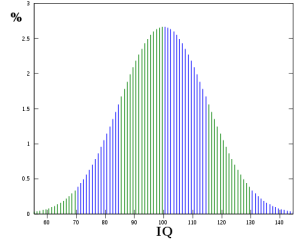Alternate title: “I love Stupidity,” somebody else’s, usually not my own. It’s a bit hard to reconcile the NAB’s desire for translators against the need and strong community support for local radio. The original intent of translators was to fill in coverage areas of existing FM licenses within the parent stations’ protected contour. Very few translators are actually used for that purpose today. They have, instead, morphed into vast over-the-air relay networks for NPR and religious stations or are relaying programming of HD-2 channels that would otherwise not be heard. Why we would need more of that, I don’t know.
The unfortunate part of all that stupidity is the side effects. Think of the stupid driver who cuts off a tractor-trailer on the interstate and causes a big pile-up. There are potential injuries to those involved in the accident but also the inconvenience to all those stuck in miles of backed-up traffic. That is a fairly minor occurrence.
With big corporate government, the size and scale of stupidity can reach epic proportions. To wit: During the natural disasters that overtook the northeast, indeed other areas of the country as well, local radio was proven to be a reliable, sometimes life-saving means of communication time and time again. Yet, in spite of all that, the NAB seems to think that LPFM stations (community radio) should be second to cross-band translators broadcasting AM stations and HD-2 channels. Regarding FM translators on AM stations, the NAB says:
NAB first commends and supports the Commission’s proposal to eliminate the restriction on the use of FM translators by AM stations to translators that were authorized as of May 1, 2009. FM translators enable AM stations to overcome inherent technical disadvantages that limit audio quality compared to other services, thus limiting their service to the public and even threatening their economic viability.
Oh where to begin? First of all, AM stations do not have inherent technical disadvantages, that is a myth. Off-the-shelf AM receivers are of inferior quality and make a well-designed, well-executed AM station sound like a telephone. If one were to listen to an older AM radio or AM on a receiver with variable bandwidth IF, one would find that it can sound quite good, if not very good. The problem is that the receiver manufacturers never carried through with the promise to open up the bandwidth following the implementation of NRSC-2 in 1991. One should wonder why.
Second, there are many AM stations out there that are economically viable. Those stations have local programming and serve the community of license and have not been neglected or turned into an automated syndicated radio repeater. Now, could a class C or class D AM station benefit from a translator at night, sure? That may not be a bad distinction to draw, especially for those class D stations with no nighttime operating authority.
Regarding more translators in general, it is difficult to imagine what all those new signals will be used for, other than more of the same (relaying distant, out-of-market religious stations, NPR stations, or HD-2 programming which nobody cares about). The FM band is already full of such things and could actually use less, not more.
While unfortunate, the NAB’s position is not surprising. They do the bidding of their dues-paying members, after all. The anti-competition we are a monopoly stance of the NAB members is not new either. Remember the required economic impact study required by the LCRA on the LPFM vs full power commercial FM stations. To think that a 100-watt LPFM could significantly impact the business of a class A, B or C FM station is laughable. Yet, it was a requirement stuck into the bill at the behest of the NAB.
It is up to the broadband-minded FCC to see how to slice the remaining FM spectrum up and whether the corporatist NAB’s argument holds water or the rising call of the people who want a return of local radio and local community service will be heard.
This is a video of what happened during Tropical Storm Irene in Ulster County, where I live:
We are truly fortunate that no one here was killed. In the mean time, the waters around here are still receding, we had some additional flooding Wednesday (9/7) with another 6 inches of rain from Tropical Storm Lee with flood warnings still in effect for several local creeks.
In my neck of the woods, we have nine radio stations licensed within about a 16 mile radius. One is religious, one is a college station, the other is a classical music format programmed from Albany, 90 miles away, one is a LPFM run by a local high school and two are commercial AM or FM station. The commercial stations used to be located in downtown Ellenville but moved to Poughkeepsie, about 30 miles away in 1999. The religious, college, and classical stations are small and have no backup systems or interest in emergency programming. That leaves the high school LPFM, WELV-LP.
In the height of the storm, 11.53 inches of rain had fallen in the previous 8 hours, the power was out, cable was out, the internet unavailable, the Verizon telephone company office in town was almost underwater, we had two sources of local Ulster county information; WDST (100.1 MHz, class A) in Woodstock and WELV-LP in Ellenville. WDST studios are located in Bearsville, which is about 25 miles north of here. They are a locally owned, locally programmed station with a good record of community support. They did a good job updating emergency information, flooded roadways, emergency shelter information, power restoration information, dry ice, alternate emergency numbers in case 911 went out, rallying points for local fire departments, etc. Ellenville Central School district’s WELV-LP also did a good job, although much more confined to the local area around Ellenville and have a much smaller coverage area. Still, they were live on the air with up to date information. Thankfully.
Next time, who knows?

